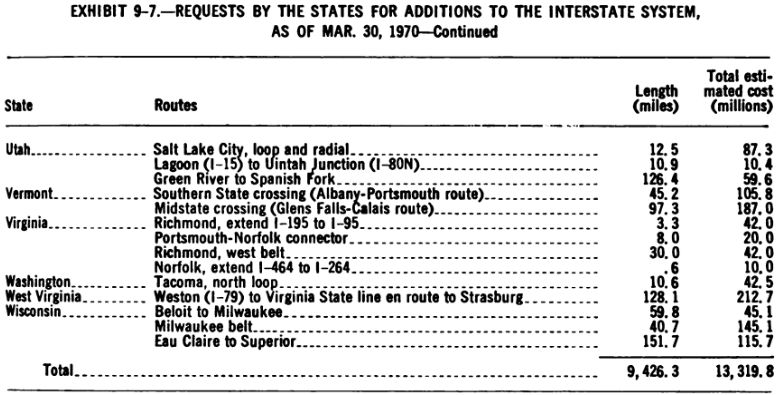< I-64 | Home | I-68 >
| I-66 One requested and one not implemented | |||
| I-66: |
I-66 #1: Requested by West Virginia as part of the 1970 additions to the Interstate System (see map graphic here). It was proposed to run from I-79 Weston east to the Virginia line near Strasburg. There was no corresponding request from Virginia which certainly didn't help. The request was denied, but this is generally the original route of Corridor H (since rerouted further north between Elkins and Baker) which provides a good high speed route in the region (even if not fully finished yet).

I-66 extension proposal from West Virginia April 1970 Congressional Hearing on the status of the Federal-aid highway program I-66 #2: The origin of another I-66 coming to West Virginia is the Intermodal Surface Transportation Efficiency Act of 1991 which established the East-West Transamerica Corridor as a high priority corridor on the national highway system. The corridor had no specific endpoints or routing parameters, but a separate item within the Act did name it I-66. Both the Washington Post and the FHWA said this corridor was California to Virginia with no details at all. The 1994 feasibility study of the entire corridor funded by the ISTEA 1991 demonstrated that only the Kentucky portion had potential immediate benefit given the cost. The National Highway System Designation Act of 1995 added a description of the route to be as follows: "commencing on the Atlantic Coast in the Hampton Roads area going westward across Virginia to the vicinity of Lynchburg, Virginia, continuing west to serve Roanoke and then to a West Virginia corridor centered around Beckley to Welch as part of the Coalfields Expressway described in section 1069(v), then to Williamson sharing a common corridor with the 1-73/74 Corridor (referred to in item 12 of the table contained in subsection (f)), then to a Kentucky Corridor centered on the cities of Pikeville, Jenkins, Hazard, London, Somerset, Columbia, Bowling Green, Hopkinsville, Benton, and Paducah, into Illinois, and into Missouri and exiting western Missouri and moving westward across southern Kansas" This new description suggested I-66 would traverse a large chunk of south central West Virginia.
| ||
Previous: I-64 |
Next: I-68
Top | West Virginia Hwy Index
Home
Page last modified 5 August 2022